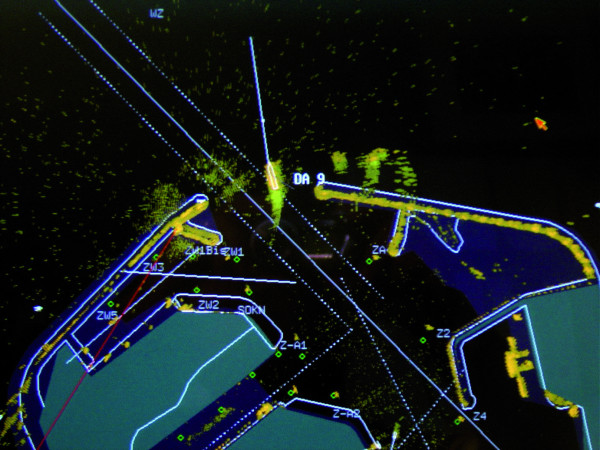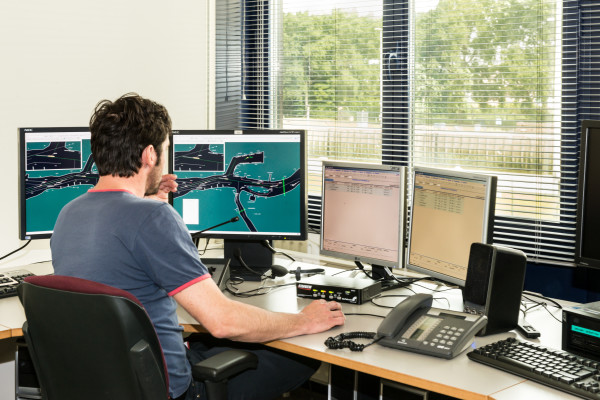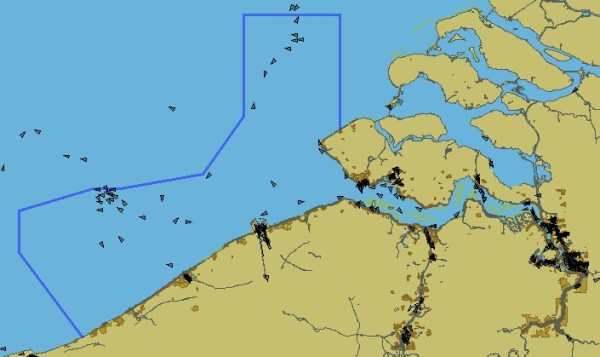Vessel Traffic Services (VTS)
Tasks

This section allows the safe and smooth navigation on the maritime access to the seaports. This is done by the organization and provision of Vessel Traffic Services (VTS).
VTS guidelines established by IMO (International Maritime Organization) and IALA (International Association of Marine Aids to Navigation and Lighthouse Authorities). In this organization all the departments are represented.
The international definition of VTS: "Services by a competent authority, to improve safety and efficiency of maritime traffic and to protect the environment. These services should have the possibility to communicate with the traffic, to react and anticipate dangerous traffic situations which develop in the vts area.
radarobservation;
telecommunication;
information proceeding;
automatical identification system
These four aspects allow vessels to be identified, to report their positions, to receive and to transmit information, to obtain and to restrict the proposed traffic and manoeuvres. It is also possible assistance to ships, for example in nautical and meteorological fields. The pilot order is made by the Pilotage according to the procedures specified in BAZ No 1/12A.
Organization
Nauticus Els Bogaert is the cell chief of 'Vessel Traffic Services " and is responsible for the daily management and operational direction of the traffic control centers in Zandvliet and Zeebrugge. For Vessel Traffic Services to be able to work around the clock, the teams work in traffic control centers.
Simulator Kallo

In compliance with IALA (International Association of Marine Aids to Navigation and Lighthouse Authorities) guidelines (IALA V – 103 Recommendations: Manual on the Training of VTS Personnel), Shipping Assistance Division has a VTS Simulator at its disposal in Kallo for the training of VTS operators as one of the subsystems of the Scheldt Radar Network
Both Flemish and Dutch traffic operators (and supervisors) of the Scheldt Radar Network can enjoy a varied and tailored package of training and refreshment courses:
basic training VTS operator;
regional training VTS operator;
local training;
refreshment courses;
team training.
The simulator has consoles which are an exact copy of the operational system and make use of real – time traffic information. The instructor follows the course participants from a separate room. Lifelike situations can be simulated as well as vessel telecommunication. The participants are debriefed in detail by means of recorded conversations and radar images.
Stefaan Priem is responsible for the organization of VTS operator training.
Working area

Vessel Traffic Services (VTS) for the Flemish Coast and sea harbours covers an area of 150 kilometres: from the Belgian – French border via the West Scheldt to Kallo lock (Antwerp). It takes a vessel approximately eight hours to cross this area, dependent on tidal movements.
The cross-border characteristics, historical background and infrastructural limitations add to the high complexity of the VTS area.
Pilot Exemtion Certificate
The Shipping Assistance Division is responsible for issuing the Pilot Exemption Certificates for the ports of Ostend or Zeebrugge.
Contact details:
